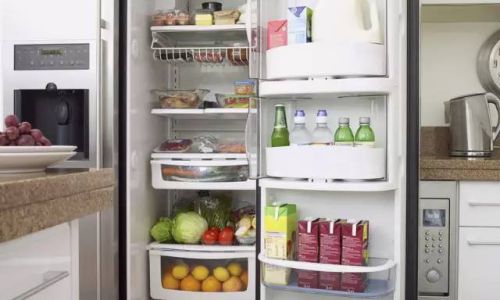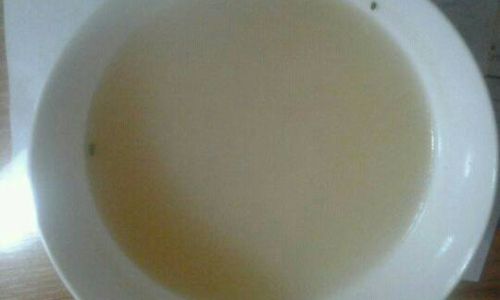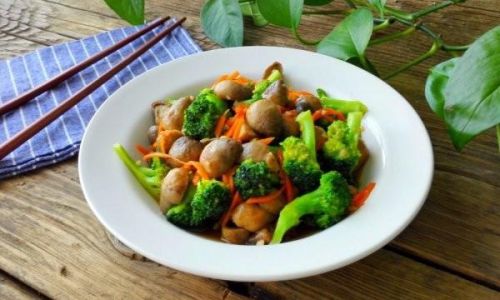The question of whether tea can be stored in the refrigerator is one that sparks debate among tea enthusiasts, casual drinkers, and even culinary experts. On the surface, it seems like a simple inquiry, but the answer involves a nuanced understanding of tea chemistry, environmental factors, and the diverse nature of tea varieties. This article delves into the science and practicality of refrigerating tea, exploring the benefits, risks, and best practices to ensure your leaves retain their flavor, aroma, and health benefits.
The Basics of Tea Storage
Before addressing refrigeration, it’s essential to grasp the fundamental principles of storing tea. Tea leaves, whether processed as green, black, oolong, white, or pu-erh, are sensitive to four primary enemies: air, moisture, light, and heat. Exposure to these elements accelerates degradation, causing tea to lose its vibrancy, develop stale flavors, or even spoil.
- Air: Oxidation occurs when tea interacts with oxygen, breaking down volatile compounds responsible for aroma and taste.
- Moisture: Even small amounts of humidity can lead to mold growth or clumping, ruining the texture and safety of the leaves.
- Light: Ultraviolet (UV) rays from sunlight or artificial light sources degrade chlorophyll and other pigments, fading the tea’s color and altering its flavor profile.
- Heat: Elevated temperatures accelerate chemical reactions, including oxidation and the evaporation of essential oils, shortening the tea’s shelf life.
Traditional storage advice emphasizes keeping tea in airtight containers (such as opaque tins, ceramic jars, or vacuum-sealed bags) in a cool, dark, and dry place, like a pantry or cupboard. However, the modern refrigerator offers a controlled environment that might seem ideal for combating heat and humidity. But does it?

The Case for Refrigerating Tea
Advocates for refrigeration argue that the fridge’s low temperatures and consistent humidity levels can slow down the enzymatic and oxidative processes that degrade tea. This is particularly relevant for delicate teas like green and white varieties, which undergo minimal oxidation during processing and retain higher levels of antioxidants and volatile aromatics.
Key benefits of refrigeration include:
- Extended Shelf Life: Cold temperatures inhibit microbial growth and enzymatic activity, potentially doubling or tripling the tea’s freshness compared to room-temperature storage.
- Preservation of Antioxidants: Catechins and polyphenols, which are abundant in green tea, degrade faster at warmer temperatures. Refrigeration may help retain these health-promoting compounds.
- Flavor Retention: For teas prized for their fresh, grassy notes (e.g., Japanese sencha or Chinese longjing), refrigeration can delay the loss of delicate flavors.
- Humidity Control: Modern refrigerators often have adjustable humidity drawers, allowing users to customize the environment for tea storage.
However, these advantages come with caveats. Not all teas benefit from refrigeration, and improper handling can introduce new risks.
The Risks and Drawbacks of Refrigeration
While the fridge seems like a logical ally in tea preservation, several pitfalls must be considered:
-
Moisture and Condensation:
Refrigerators are humid environments by design. When cold tea containers are removed and exposed to warmer room temperatures, condensation forms on the surface. Even a tiny amount of moisture can compromise the tea’s quality, leading to:- Mold Growth: Especially in loosely packed leaves or floral teas (e.g., jasmine pearls).
- Clumping: Moisture causes leaves to stick together, making them harder to measure and brew.
- Diluted Flavor: Excess moisture alters the tea’s taste, often resulting in a flat or musty profile.
-
Odor Absorption:
Tea leaves are highly porous and absorb surrounding smells. Storing tea in a refrigerator shared with onions, garlic, strong cheeses, or leftovers risks infusing the leaves with unwanted flavors. -
Temperature Fluctuations:
Frequent opening and closing of the fridge door cause temperature swings, which can stress the tea leaves and accelerate degradation. -
Incompatibility with Certain Teas:
- Aged Teas: Pu-erh and some oolongs undergo controlled fermentation and aging, which require specific microbial activity. Refrigeration halts this process, stunting their development.
- Flavored Teas: Teas blended with dried fruits, spices, or essential oils may lose their aromatic complexity in the fridge.
- Black Teas: Fully oxidized black teas are less prone to rapid degradation and may not benefit from refrigeration, which could mask their robust flavors.
Best Practices for Refrigerating Tea
If you decide to experiment with refrigeration, follow these guidelines to maximize benefits and minimize risks:
-
Use Airtight, Opaque Containers:
- Opt for vacuum-sealed bags, glass jars with rubber gaskets, or stainless steel tins.
- Avoid plastic containers, as they may retain odors or allow moisture penetration over time.
-
Minimize Exposure to Air:
- Divide tea into small batches to reduce the frequency of opening the container.
- Press out excess air from bags before sealing.
-
Control Humidity:
- If your refrigerator has a crisper drawer with humidity control, set it to low humidity for tea storage.
- Add a silica gel packet (food-safe) to absorb residual moisture.
-
Isolate Odors:
Store tea in a dedicated compartment or wrap containers in a sealed plastic bag to prevent cross-contamination.
-
Acclimatize Before Opening:
- Allow refrigerated tea to reach room temperature before opening the container to prevent condensation. This step is critical—rushing the process can introduce moisture.
-
Prioritize Delicate Teas:
Reserve refrigeration for green, white, and light oolong teas. Avoid refrigerating aged pu-erh, black teas, or herbal infusions unless necessary.

Alternatives to Refrigeration
For those hesitant to use their fridge for tea storage, several alternative methods offer effective preservation:
-
Cool Pantry or Cellar:
A dark cupboard away from heat sources (stove, oven, windows) provides a stable environment for most teas. -
Freezing (for Long-Term Storage):
- Freezing tea at 0°F (-18°C) halts degradation almost entirely.
- Use airtight containers and thaw frozen tea in the fridge overnight before use.
- Avoid refreezing, as repeated temperature changes damage leaf structure.
-
Vacuum Sealing:
- Removes oxygen from the packaging, preventing oxidation and extending shelf life.
- Ideal for large quantities of tea or infrequently used blends.
-
Opaque Ceramic Jars:
Ceramic blocks light and regulates humidity, mimicking traditional tea caddies used in Asian tea cultures.
-
Desiccant Packets:
Include food-safe silica gel or rice grains in storage containers to absorb excess moisture.
The Verdict: Should You Refrigerate Tea?
The answer depends on your tea type, storage goals, and lifestyle.
-
Refrigerate if:
- You live in a hot, humid climate with no air conditioning.
- You purchase tea in bulk and consume it slowly.
- You prioritize preserving delicate flavors and antioxidants in green or white teas.
-
Avoid refrigeration if:
- You own aged or fermented teas (pu-erh, some oolongs).
- Your fridge is crowded or prone to odor leaks.
- You prefer the convenience of pantry storage and consume tea within a few months.
Scientific Studies and Cultural Perspectives
Research on tea storage is limited but growing. A 2018 study published in the Journal of Food Science found that refrigerated green tea retained 85% of its catechin content after six months, compared to 60% for room-temperature samples. However, the refrigerated tea also showed slight flavor dulling, attributed to condensation during testing.
Culturally, refrigeration is uncommon in tea-producing regions like China and Japan, where traditional storage methods (e.g., clay jars, bamboo containers) are preferred. However, modern tea shops in urban areas may offer refrigerated options for premium green teas, reflecting a blend of tradition and technology.
Conclusion
The question of refrigerating tea boils down to balancing preservation needs with practicality. While the fridge can extend the life of delicate teas and protect them from heat, it demands careful handling to avoid moisture and odor issues. For most tea drinkers, a cool, dark pantry with airtight containers suffices. However, if you’re committed to maximizing freshness or live in a challenging climate, refrigeration—when done right—can be a valuable tool in your tea arsenal.
Ultimately, the best storage method is the one that aligns with your habits, tea collection, and taste preferences. Experiment, observe, and savor the nuances of your leaves—after all, tea is as much an art as it is a science.






0 comments